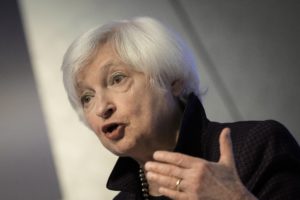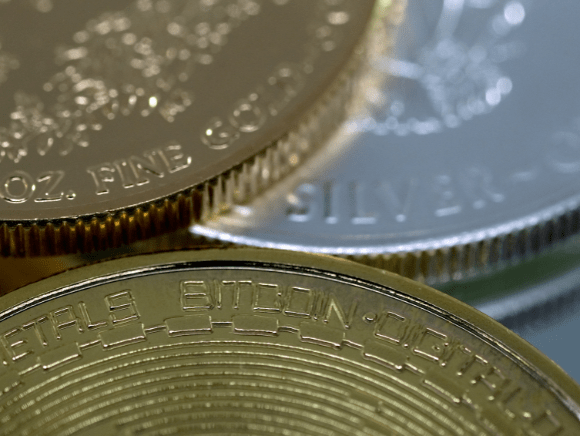For many Wall Street firms, the baseline scenario for 2023 is a US recession. However, a few months after coming out of a technical downturn – back-to-back quarters of negative gross domestic product (GDP) growth – the world’s largest economy might already be in another one, according to a monthly report. While many economists and market analysts keep alluding to the labor market as a reason why the US is not in the middle of a recession, there is plenty of data to suggest economic conditions are deteriorating, from manufacturing to the tech sector. Plus, 300 million Americans are still contending with 40-year high inflation.
Brace for Another US Recession
The Conference Board Leading Economic Index (LEI) tumbled by 0.8% in October, down from a 0.5% drop in September. The index’s annual growth rate became more negative last month, and it is showing no signs of improvement. Over the last six months, the LEI has slumped more than 3%, a complete reversal from the monthly measurement’s 0.5% growth in the previous six-month span.
 The LEI assesses ten different components, including weekly initial claims of unemployment insurance, average consumer expectations for business conditions, manufacturers’ new orders for consumer goods and materials, and weekly hours in the manufacturing sector.
The LEI assesses ten different components, including weekly initial claims of unemployment insurance, average consumer expectations for business conditions, manufacturers’ new orders for consumer goods and materials, and weekly hours in the manufacturing sector.
“The US LEI fell for an eighth consecutive month, suggesting the economy is possibly in a recession,” said Ataman Ozyildirim, the senior director of economics at the CB, in a statement. “The downturn in the LEI reflects consumers’ worsening outlook amid high inflation and rising interest rates, as well as declining prospects for housing construction and manufacturing. The Conference Board forecasts real GDP growth will be 1.8 percent year-over-year in 2022, and a recession is likely to start around yearend and last through mid-2023.”
In addition, the CB Coincident Economic Index (CEI) edged up 0.2%, while the Lagging Economic Index (LAG) rose 0.1%.
For investment firms and market experts, a US recession is almost guaranteed for some time next year, as the Federal Reserve raises interest rates and kills demand. But is the nation in the middle of a downturn now? For many households, it might feel like it, with rampant price inflation crippling families nationwide. But the technical numbers suggest that the economy is still expanding after the third-quarter GDP growth rate came in at 2.6%. Plus, the Atlanta Fed Bank’s GDPNow model estimates 4.2% for the fourth quarter.
Who’s Afraid of US Treasurys?
In September, foreign governments and central banks were net sellers of US Treasury bonds and notes, according to the latest data from the Treasury Department. But America’s two largest holders of US debt – Japan and China – sold nearly $118 billion, the largest combined monthly decline on record. Tokyo reduced its balances by $79.6 billion, and Beijing ditched $38.2 billion. This has been the theme for most of 2022. In the first nine months of the year, Japanese holdings of Treasurys fell 14% to $1.12 trillion, and Chinese ownership dropped 12% to $933.6 billion.

Treasury Secretary Janet Yellen (Photo by Drew Angerer/Getty Images)
Overall, cracks are forming in the domestic bond market, with both the Treasury Department and the Federal Reserve warning about liquidity issues in the $24 trillion market. Should the situation intensify, this could create a contagion effect for the broader financial markets, the central bank noted in its latest financial stability report. “Liquidity metrics, such as market depth, suggest that Treasury market liquidity has remained below historical norms. Low liquidity amplifies the volatility of asset prices and may ultimately impair market functioning,” the Eccles Building stated.
As Liberty Nation reported, the Treasury revealed that it had been in discussions with primary dealers about buying back some of its older debt to prevent chaos in the bond market. “We are worried about a loss of adequate liquidity in the market,” Treasury Secretary Janet Yellen said following a speech in Washington, DC, in October.
Is Gold an Inflation Hedge?
With the annual consumer price index (CPI) at a 40-year high of 7.7%, which is eating away at consumers’ purchasing power, many have been searching for a reliable inflation hedge. Cryptocurrency has proven not to be the safe-haven asset many had hoped. Real interest rates on savings accounts (inflation-adjusted) are still negative. What about gold, the go-to solution for every geopolitical crisis, economic challenge, and inflationary pressure?
The front-month contract for gold prices finished the Nov. 18 trading session at around $1,750. Year-to-date, the yellow metal has slumped more than 4%, despite what would seem like a perfect climate for the commodity. But while it is down on the year, gold has been performing better than many other assets in the global financial markets, including many western currencies, a wide range of commodities, and equities.
 That said, skeptics might have a point. Although gold is an industrial metal that serves a purpose, why should investors hold the precious metal if it is not shielding holders from sky-high inflation? The problem for the buck has been two-fold in 2022. The first is that the US Dollar Index (DXY), a measurement of the greenback against a basket of currencies, has rallied 12% this year. A stronger buck is terrible for dollar-denominated commodities because it makes it more expensive for foreign investors to purchase. The second is that interest rates are rising. Gold is generally sensitive to a rising-rate environment because it lifts the opportunity cost of holding non-yielding bullion.
That said, skeptics might have a point. Although gold is an industrial metal that serves a purpose, why should investors hold the precious metal if it is not shielding holders from sky-high inflation? The problem for the buck has been two-fold in 2022. The first is that the US Dollar Index (DXY), a measurement of the greenback against a basket of currencies, has rallied 12% this year. A stronger buck is terrible for dollar-denominated commodities because it makes it more expensive for foreign investors to purchase. The second is that interest rates are rising. Gold is generally sensitive to a rising-rate environment because it lifts the opportunity cost of holding non-yielding bullion.
Still, despite its abysmal performance, the current economic landscape suggests that it is still better to own physical and tangible assets than anything else, from crude oil (+5%) to oranges (+43%) to soybeans (+7%). It is better than a piece of paper that is only backed by the trust in Uncle Sam. Considering that foreign nations are dropping US debt faster than the Minnesota Vikings fumbling at the goal line, that confidence is quickly eroding.




